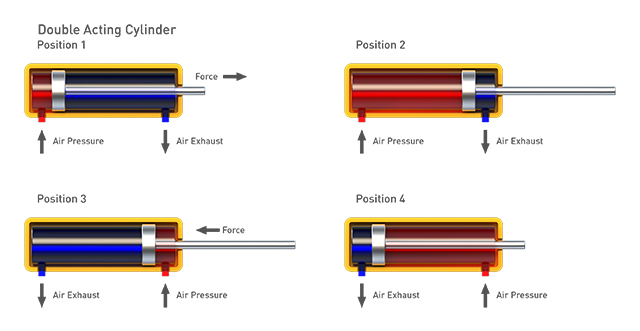
double-acting [duhb-uh l-ak-ting] ExamplesWord Origin adjective
- (of a reciprocating engine, pump, etc.) having pistons accomplishing work in both directions, fluid being admitted alternately to opposite ends of the cylinders.Compare single-acting.
- (of a hinge of a door or the like) permitting movement in either direction from the normal, or closed, position.
- having twice the usual effectiveness, strength, use, etc.
Origin of double-acting First recorded in 1835–45 Examples from the Web for double-acting Historical Examples of double-acting
To each crane is fixed a 10-inch cylinder, 20-inch stroke, double-acting.
Life of Richard Trevithick, Volume II (of 2)
Francis Trevithick
This company substituted a double-acting pump early in 1910.
Various
The new cylinder that he invented to attach to this working-frame was double-acting.
Lyman Horace Weeks
E is the steam-cylinder, and F the pump, which is seen to be double-acting.
A History of the Growth of the Steam-Engine
Robert H. Thurston
This differs from the one just described chiefly in that it is single-acting, while the other is double-acting.
Scientific American Supplement, No. 799, April 25, 1891
Various
British Dictionary definitions for double-acting double-acting adjective
- (of a reciprocating engine or pump) having a piston or pistons that are pressurized alternately on opposite sidesCompare single-acting
- (of a hinge, door, etc) having complementary actions in opposed directions
 Liberal Dictionary English Dictionary
Liberal Dictionary English Dictionary